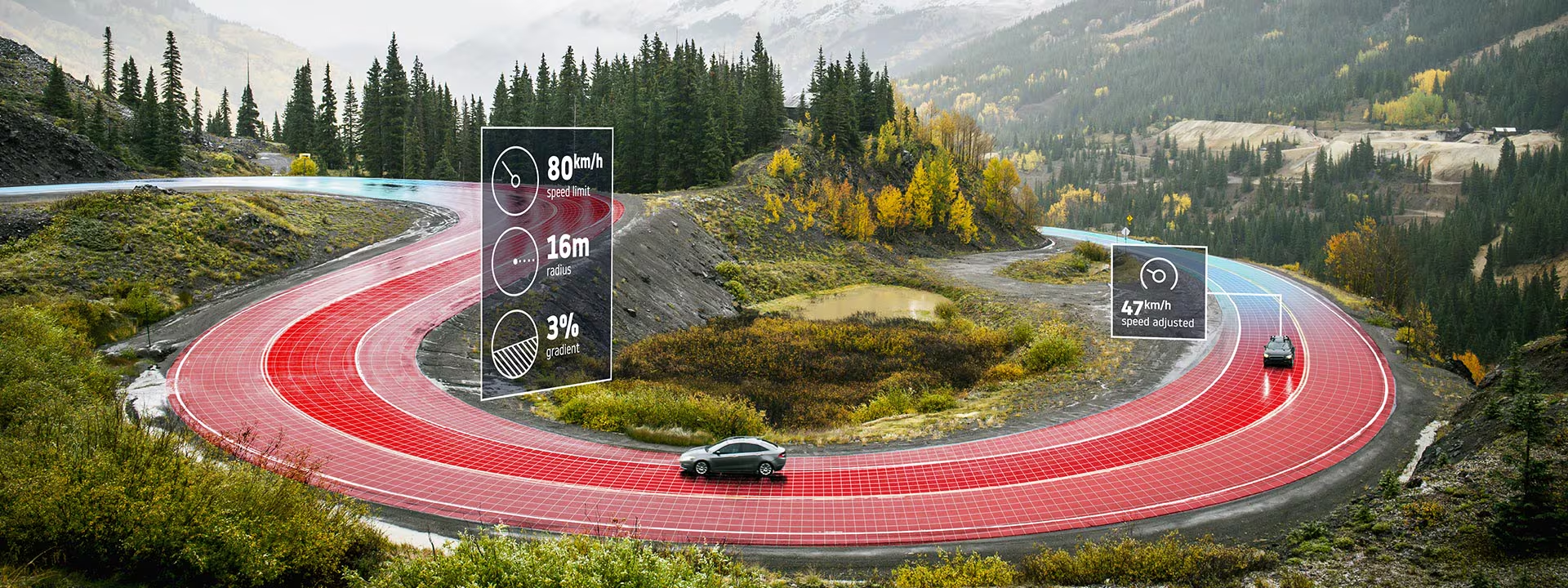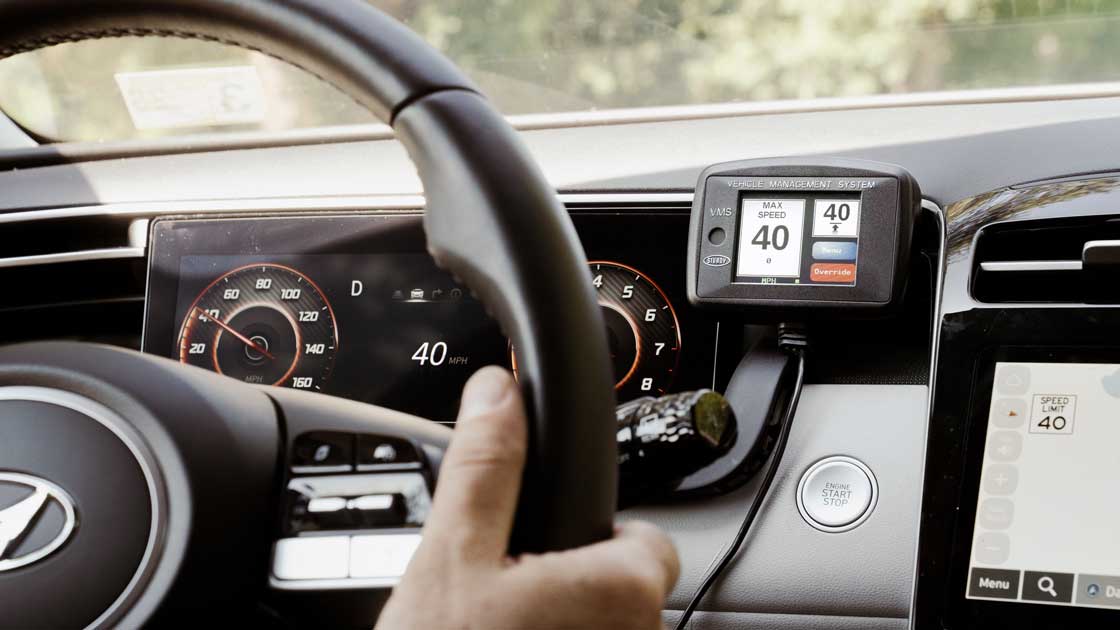ISA & Global Regulations: What Fleet Operators Must Know in 2025
Jul 8, 2025 Resolute Dynamics
You know that gut feeling when a driver’s just about to blow past a limit sign—and then doesn’t? That’s Intelligent Speed Assistance (ISA) quietly doing its job. But what used to be a “nice-to-have” safety feature has now shifted gears into a regulatory must-have.
From Europe’s strict mandates to Oman’s inspection checkpoints, the pressure is mounting. If you’re managing a fleet, you’re not just dealing with driver behavior anymore—you’re steering through a patchwork of regional laws, tech standards, and compliance timelines.
✅ Key Takeaway:
Intelligent Speed Assistance (ISA) has shifted from optional tech to mandatory compliance across regions like the EU, UAE, Oman, and India—with U.S. cities quietly following suit.
This isn’t just about ticking legal boxes. Fleet operators who delay risk more than just citations—they face grounded vehicles, missed contracts, and inflated insurance premiums.
The smart move? Map your operational zones, check current vehicle specs, and integrate ISA with telematics and AI systems built for real-time control. It’s not about staying legal—it’s about staying operational.
What Is ISA—and How It’s Different from the Old Stuff
Old-school speed limiters were like a sledgehammer: hit a ceiling and cut the power. ISA? It’s more like a smart co-driver. It reads road signs, maps, and even driving patterns in real time, nudging the vehicle to stay within posted limits.
There are levels to this thing:
- Informative: Just shows the limit on screen
- Supportive: Gives audible/visual warnings if speeding
- Intervening: Applies automatic braking or throttle control
ISA doesn’t just react—it anticipates. That’s the leap.
Why It’s No Longer Optional: The Global Push for ISA

Regulators have drawn a line in the asphalt. In the EU, ISA is mandatory for all new vehicle types since July 2024. That’s not a suggestion—it’s law.
What kicked this off?
- Rising fatalities despite better roads
- Pressure to meet Vision Zero and UN R152 safety goals
- Tech catching up to policy
Now other countries are jumping in. Some fast. Others cautiously. Either way, the dominoes are falling.
Region-by-Region Breakdown
European Union
Since July 2024, the EU’s General Safety Regulation (GSR) mandates ISA in all newly registered vehicle types—passenger, commercial, light-duty, and heavy-duty alike. No carve-outs. If a vehicle is type-approved post-regulation, it must have ISA installed and active.
Enforcement happens in two stages:
- Initial registration checks via type-approval certification
- Periodic technical inspections—ISA function must be verifiable or the vehicle fails
For pan-European fleets, this regulation applies across all member states. Whether you’re based in Spain or shipping into Germany, the compliance line is the same. Failures can lead to de-registration, suspended access to public roads, and—in some countries—fleet liability in crash investigations.
Middle East (UAE, Saudi Arabia, Oman)
United Arab Emirates (UAE):
UAE is aligning its national transport safety strategy with UN ECE R152 and ISO 39001 frameworks. While ISA isn’t federally required on every vehicle yet, large contractors—especially those tied to government logistics—are being told to adopt ISA and speed governance as part of RTA compliance protocols.
Saudi Arabia:
ISA is being pushed into high-risk vehicle categories such as long-haul trucks and buses. Government tenders often require proof of active speed control systems. Telematics providers working in the Kingdom already integrate ISA into mandatory ELD (Electronic Logging Device) kits.
Oman:
Here, it gets stricter. Oman’s Royal Oman Police (ROP) enforce annual inspections for commercial vehicles, and ISA is now a required component for heavy-duty trucks and buses. If a fleet vehicle lacks functioning ISA, it fails inspection—immediately. That means no road access until it’s fixed and retested. Penalties include heavy fines, temporary vehicle impoundment, and insurance complications.
Asia-Pacific (India, Singapore, Japan)
India:
The Bureau of Indian Standards and MoRTH have introduced AIS-140, a framework for automotive intelligence and safety—ISA included. While nationwide mandates aren’t in full effect, several states (including Maharashtra and Karnataka) require ISA for school buses, tourist coaches, and certain public-sector fleet tenders.
These rules often go hand-in-hand with vehicle tracking systems, panic buttons, and camera surveillance. Many fleet operators think of them as separate technologies—but in practice, AIS-140-compliant telematics solutions often include speed assistance logic.
Singapore & Japan:
Singapore is exploring ISA as part of its Smart Mobility 2030 roadmap. Trials with municipal delivery vehicles and waste management fleets are ongoing, with performance reviews linked to emission targets and accident reduction. Japan, meanwhile, is channeling ISA into elder-driver licensing schemes and logistics corridors with high foot traffic.
North America
The U.S. hasn’t federally mandated ISA—yet. But the ground is shifting. New York City has already rolled out ISA across dozens of government fleet vehicles as part of its Vision Zero goals. L.A. and San Francisco are watching closely.
Some insurers are offering premium discounts to fleets that voluntarily implement ISA or similar governance systems. More importantly, NHTSA is evaluating the inclusion of ISA under future FMVSS (Federal Motor Vehicle Safety Standards) changes—especially for Class 7 and 8 vehicles.
If you operate across state lines or bid on federal contracts, ISA could soon be less about “if” and more about “how soon.”
Why Fleet Operators Should Actually Welcome This

ISA doesn’t just keep regulators off your back. It actually pays off. Here’s what fleet managers are seeing:
- Fewer incidents: Up to 30% drop in speeding violations
- Lower fuel use: Smoother throttle = better mileage
- Insurance perks: Lower premiums for governed vehicles
- Driver consistency: No more “cowboys” pushing 90 in a 60 zone
And that’s not marketing fluff. Those are numbers from real fleets with ISA and telematics integration.
Monitoring vs Governance: The Real Debate
A dashcam that barks when a driver speeds is helpful, yet it only observes. Intelligent Speed Assistance (ISA) steps in and acts. Understanding this split—monitoring versus governance—saves money, cuts crashes, and shields you from courtroom drama.
Quick Definitions with Real-World Flavor
- Monitoring: Passive data capture and alerts. Think dashcams pinging HQ, telematics logs, text-to-fleet push notifications. Drivers hear a beep, but nothing stops the wheels.
- Governance: Active intervention. ISA or a speed governor trims throttle or applies gentle braking before the driver hits a ticket-worthy speed.
Side-by-Side Snapshot — Pros, Cons, Costs
| Feature | Monitoring (Passive Driver Control) | Governance (Active Driver Control) |
| Action | Beeps, texts, dashboard prompts | Automatic speed cut-off via ISA |
| Upfront Cost | Lower (camera + telematics) | Higher (hardware, calibration) |
| Operating Cost | Data storage + coaching time | Maintenance checks for ISA sensors |
| Liability Shield | Limited—relies on driver response | Strong—system intervenes before violation |
| Driver Perception | Less intrusive, easy buy-in | Can feel restrictive without training |
| Regulation Fit | Accepted where ISA isn’t yet mandatory | Required under EU GSR 2024, Oman ROP checks, many AIS-140 contracts |
| Data for Coaching | Rich video and speed logs | Speed logs plus proof of interventions |
| Insurance Impact | Modest discounts in some regions | Bigger premium cuts for enforced compliance |
Hidden Price Tag of “Monitor-Only” in ISA Regions
- EU fleets: Skip governance and fail a periodic technical inspection; vehicle can’t leave the depot until fixed.
- Oman: ROP officers flag trucks that record over-speed events without intervention. Fines stack fast, and repeat offenders risk impoundment.
- India (AIS-140): School-bus contracts often demand active speed limiting; monitor-only setups get disqualified.
Ignoring active control looks cheaper on paper. In practice, the first compliance audit or post-crash lawsuit wipes out the saving.
Bottom Line
The difference between fleet monitoring and governance decides whether you get a friendly reminder or a hard stop. For regions moving to ISA enforcement vs ISA alert, blend both: use cameras for coaching, deploy ISA for control. The mix keeps insurers happy, drivers safer, and regulators off your back—all while steering clear of surprise costs.
Tech Setup: Is It Worth the Investment?
Installing ISA isn’t a plug-and-play weekend project. It costs money. It takes time. But if you’re running a fleet that moves goods, people, or equipment, it often pays for itself faster than expected.
ISA Retrofit Options: Not Just for New Vehicles
Don’t have a shiny new Euro 6-compliant truck? Doesn’t matter. You can retrofit older vehicles with aftermarket ISA kits—especially in the following categories:
- Urban buses: Often required in school zones or city contracts
- Heavy trucks (Class 7–8): Ideal for long-haul or cross-border operators
- Utility and service vans: High start/stop frequency benefits from smoother speed regulation
- Tourist coaches: Growing demand for safer, quieter driving
Aftermarket ISA systems usually include:
- A GPS-linked control unit
- Speed sign recognition via camera (or map-matching logic)
- Throttle cut-off or soft brake integration
- Optional driver override logging
What Will It Cost Me?
Here’s the ballpark—costs vary by vehicle class, local labor, and system features:
- Light commercial vehicles: $350–$700 per unit
- Heavy trucks or buses: $800–$1,800 per unit
- Installation time: 2–4 hours per vehicle
- Ongoing costs: Minimal—typically limited to sensor recalibration during regular service
Most providers offer bulk discounts and may bundle ISA with telematics or ADAS packages.
⚠️ Don’t wait until inspection day.
[Get a ISA readiness audit ] and see where your fleet stands.
ROI: When the Math Starts Making Sense
Let’s break this down with real-world numbers from a mid-sized logistics fleet:
| Benefit | Estimated Annual Savings (Per Vehicle) |
| Accident reduction (25–40%) | $1,200–$3,000 (repairs, downtime, admin) |
| Insurance premium drop | $400–$1,100 depending on insurer |
| Fuel efficiency gain (4–8%) | $350–$700 on long-haul routes |
| Driver behavior improvement | Fewer tickets, better CSA scores = bonus eligibility & contract wins |
Total first-year savings: often between $2,000–$4,500 per vehicle
That means break-even is usually inside 12–18 months, depending on operating conditions.
What About Training and Rollout?
You don’t need a six-month plan or a conference room full of engineers. Here’s what the rollout generally looks like:
- Driver training time: 30–60 minutes
- Tech team time: Half-day to test systems and tweak thresholds
- Total rollout per depot: 2–5 days, depending on fleet size
Best practice? Start with high-risk routes or vehicle classes first. Gradually expand once the savings and smoother driving become obvious.
Challenges and Legal Hazards
ISA can prevent speed violations—but it won’t save your business if it’s misconfigured, ignored, or bypassed. In regulatory regions like the EU or Oman, failure isn’t theoretical. It comes with paperwork, penalties, and sometimes a courtroom seat.
Can Drivers Override ISA? Yes. Should They? That Depends.

Most ISA systems include override functionality—either temporary (press hard on the pedal) or permanent (button-based deactivation). This feature exists for safety in emergency maneuvers. But in practice, it’s also abused.
And here’s the kicker: If a crash occurs and the system was overridden, the liability often shifts to the operator.
Who’s Held Responsible After a Collision?
Let’s say your vehicle rear-ends a school bus in a 40 km/h zone while traveling 62 km/h. ISA was installed—but override logs show the driver disabled it. Now what?
- In Oman or the EU, inspectors will check telematics logs and ISA event history
- If ISA was active, liability may lean toward the driver
- If ISA was deactivated or malfunctioning, it shifts back to the fleet
- In India, under AIS-140, fleet operators are held accountable for system compliance, regardless of override behavior
In insurance investigations, ISA override records are now as important as dashcam footage. Some insurers may deny claims entirely if tampering or override misuse is evident.
Oman: The Inspection Is the Law
Oman’s Royal Oman Police (ROP) doesn’t just check if you have ISA. They test it.
- During annual inspections, heavy vehicles are plugged into diagnostic tools
- If ISA isn’t operational or fails to cut speed during test conditions, the vehicle fails
- No appeal, no grace period—fix it or park it
And if that vehicle causes a violation or accident after passing inspection fraudulently? Expect fines, license suspension, and civil penalties.
A Real-World Example: When One Line of Code Costs You Thousands
A logistics fleet in Muscat had ISA installed across its long-haul trucks. But to reduce driver complaints, the manager had a technician raise the speed cap slightly above legal limits—70 km/h in a 60 km/h zone.
Three months later, a vehicle crashed. Police reviewed ISA logs, found the altered settings, and cited the fleet—not the driver. Outcome?
- $3,200 in fines
- Insurance rejection due to non-compliance
- Two vehicles grounded for re-inspection
Final Thought
ISA doesn’t erase legal risk—it reshapes it. You’re not just buying tech. You’re adopting a safety control system that must align with inspection standards, override logic, and post-incident scrutiny.
Install it. Calibrate it. And don’t let drivers—or your tech team—turn it into a silent liability.
What’s Next: ISA Meets AI, EVs, and Smart Cities
We’re not far from dynamic ISA, geo-fenced to school zones or delivery hubs. Some cities are already pushing this live.
There’s chatter about AI-driven ISA that predicts speed limit before the sign even appears—based on surroundings, time of day, and driving history. Think of it as predictive compliance.
Eventually, ISA won’t just follow rules. It’ll forecast them.
Takeaway for Fleet Managers
ISA isn’t a burden—it’s a leverage point.
Regulations may feel like red tape, but they’re also an excuse to modernize your fleet, lower your costs, and cut legal risk.
Here’s the move:
- Audit your fleet’s speed control tech
- Check local laws in every operating region
- Talk to vendors about integration—not just installation
- Prioritize ISA on high-risk routes first
The road’s changing. Either you adapt, or you fall behind.
FAQs
Do I need ISA in the US right now?
Not federally, but some city and insurance policies are pushing it.
What happens if a driver overrides ISA?
Depends on your configuration. Some systems log the override. Others block it entirely.
Can I retrofit my old fleet?
Yes. Aftermarket ISA systems exist for most commercial models.
Does ISA affect performance?
Only if you’re used to speeding. Otherwise, it smooths out your driving profile.
Ready to Explore ISA?
Talk to Resolute Dynamics about smart ISA integration. Whether you’re dealing with EU mandates or GCC inspections, we help fleets stay ahead of the curve—and the fines.